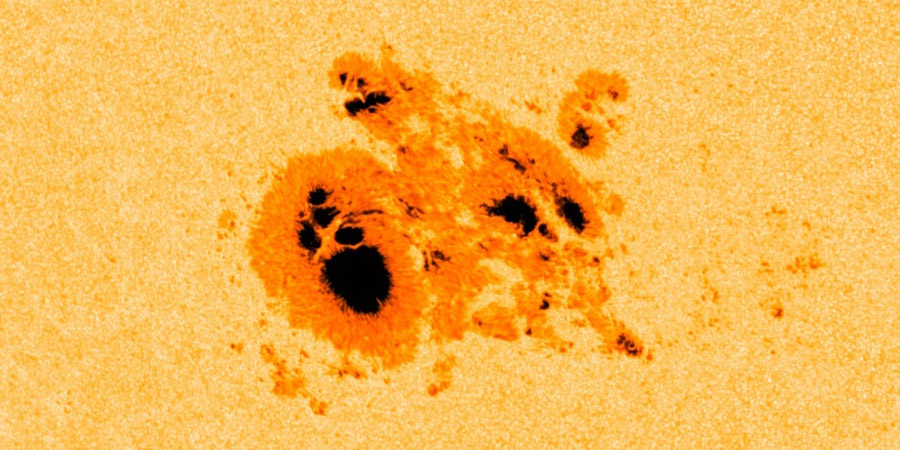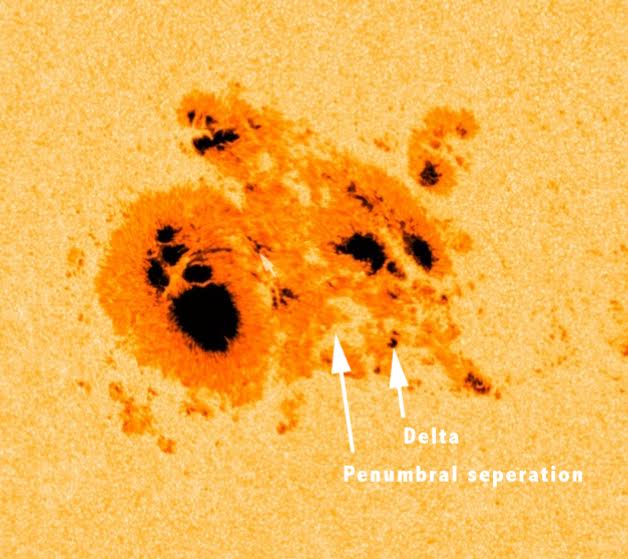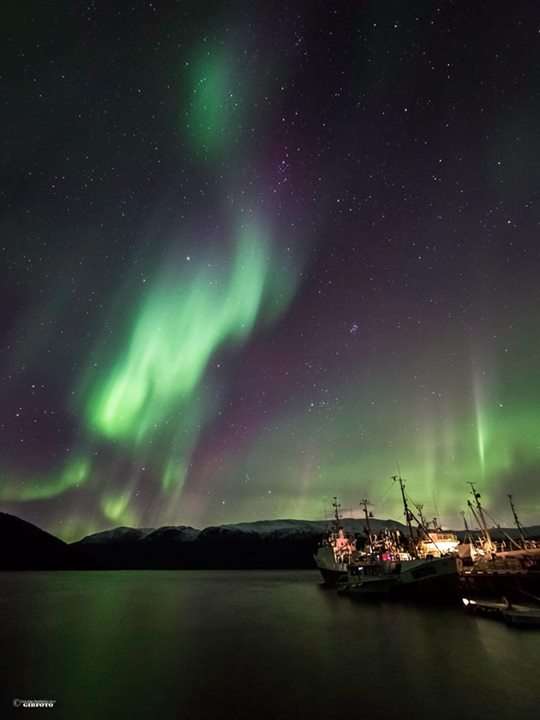Giant sunspot region 2192, active aurora
Tuesday, 21 October 2014 21:07 UTC

Sunspot region 2192 reached a size of 2400 millionths today according to the NOAA SWPC making it the largest sunspot region of this solar cycle and the largest sunspot group since sunspot region 486 which was the source of several strong solar storms almost 11 years ago. Sunspot region 2192 has been producing several M-class solar flares since our last update but only one of those M-class solar flares occurred today. It was an impulsive M1.2 (R1-minor) solar flare that peaked at 13:38 UTC. None of the solar flares mentioned have produced a coronal mass ejection. In this news article we take a look at sunspot region 2192 and the current geomagnetic conditions.
Evolution of sunspot region 2192

All the other sunspot regions on the disk are unremarkable. Any future solar flares will very likely be centered around sunspot region 2192 which is now rotating into a better earth-facing position.
Images: NASA SDO.
Solar flare odds for the coming 24 hours
M-class flare probability: 60% chance
X-class flare probability: 10% chance
Geomagnetic conditions
We can write pretty much the same here as yesterday as geomagnetic conditions remain elevated thanks to continuing coronal hole effects. Minor G1 geomagnetic storm conditions were reached last night (UTC time) which sparked aurora over many high latitude locations in Europe. This stunning image below was captured last evening by Gibfoto from Tromsø, Norway.

The solar wind speed remains well elevated near 600km/s with a variable IMF direction. Active (Kp4) geomagnetic conditions remain possible. Sky watchers in Scotland, Norway, large parts of Sweden, Finland and those near the US-Canadian border should remain alert for aurora as coronal hole effects continue to influence space weather near Earth.
Thank you for reading this article! Did you have any trouble with the technical terms used in this article? Our help section is the place to be where you can find in-depth articles, a FAQ and a list with common abbreviations. Still puzzled? Just post on our forum where we will help you the best we can!
Latest news
Latest forum messages
Support SpaceWeatherLive.com!
A lot of people come to SpaceWeatherLive to follow the Sun's activity or if there is aurora to be seen, but with more traffic comes higher server costs. Consider a donation if you enjoy SpaceWeatherLive so we can keep the website online!

Space weather facts
| Last X-flare | 2024/03/28 | X1.1 |
| Last M-flare | 2024/04/25 | M1.3 |
| Last geomagnetic storm | 2024/04/19 | Kp7 (G3) |
| Spotless days | |
|---|---|
| Last spotless day | 2022/06/08 |
| Monthly mean Sunspot Number | |
|---|---|
| March 2024 | 104.9 -19.8 |
| Last 30 days | 135.5 +27.6 |


